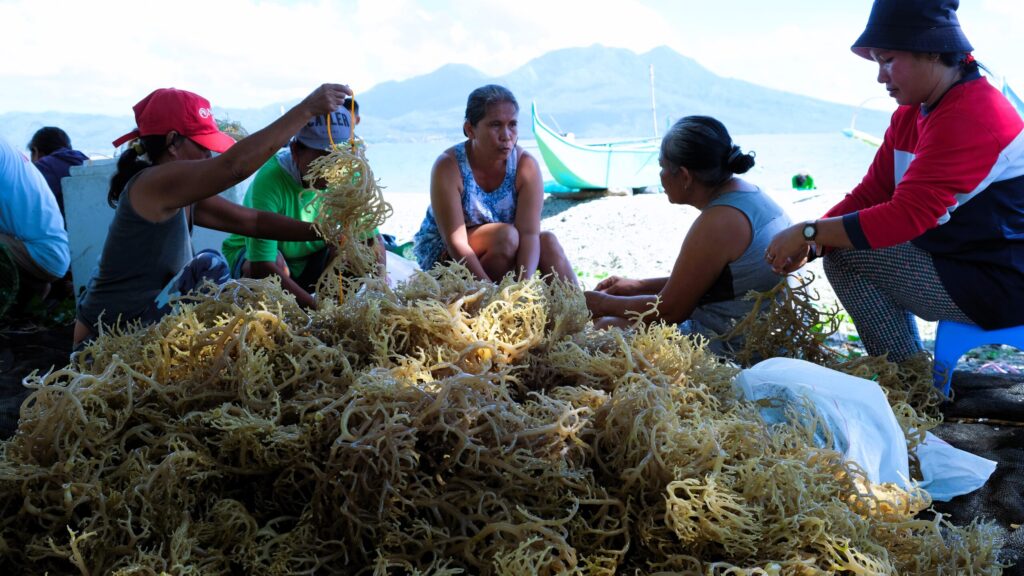Harnessing Nature for a Harmonious Future: Spotlighting Ecosystem-based Adaptation Solutions

In the face of escalating climate challenges, ecosystem-based adaptation (EbA) emerges as a practical approach with the potential to catalyse climate resilience, biodiversity conservation, and sustainable development. This strategic approach—leveraging biodiversity and ecosystem services to help communities adapt to the adverse effects of climate change—is increasingly recognised for its multifaceted benefits for both people and nature.
The theme of this year’s International Day for Biodiversity is “Harmony with nature and sustainable development”. EbA is a vital tool in the fight against climate change, offering a pathway to biodiversity conservation, environmental resilience, and sustainable development.
The Global EbA Fund is supporting solutions for a more sustainable and harmonious future through catalytic, innovative, and inclusive projects across the globe.
Enhancing Biodiversity
EbA has consistently contributed to biodiversity conservation. Healthy ecosystems are more resilient to climate change and can provide safe and suitable habitats for diverse species. Initiatives like reforestation and wetland restoration not only sequester carbon but also create thriving habitats for diverse flora and fauna. By prioritising biodiversity, EbA ensures the maintenance of ecosystem services that are vital for human survival and well-being. Diverse ecosystems are better equipped to adapt to changing conditions, ensuring the continued provision of essential services amid increasingly frequent and intense climate-induced natural disasters.
In the Pacific Islands of Micronesia and the Marshall Islands, the American Bird Conservancy is developing “The Seabird Forest Toolkit: A Resource for Climate Adaptation Across Tropical Ocean Regions”, to restore native atoll forest ecosystems by transforming coconut palm monocultures into biodiverse landscapes. Coconut palms have long been an important species for tropical oceanic island communities. However, native island ecosystems are at risk, with island species having higher rates of extinction and endangerment than continental ones, trends largely driven or compounded by invasive species, habitat transformation and climate change. These biodiversity losses diminish the functioning of island- and adjacent marine-ecosystems, while simultaneously reducing their resilience to current and future climate change impacts, including shoreline erosion, habitat loss, and declining ecosystem integrity.
The Toolkit combines habitat restoration, invasive species removal, and seabird recovery strategies to rebuild native seabird forests. Through marine-derived nutrients, in the form of guano and discarded prey, seabirds transport nitrogen and phosphorous, enabling primary productivity in atoll forests. This develops a positive feedback loop between marine and coastal ecosystems, enhancing the resilience of island biodiversity, and the climate resilience of local communities.
Building Climate Resilience
At the heart of EbA is the use of natural systems to address existing and anticipated climate vulnerabilities. Restoring and preserving ecosystems, such as wetlands, forests, and mangroves, can protect communities against damage from extreme weather events, reduce the risk of natural disasters, and preserve essential ecosystem services. For instance, mangroves serve as natural storm barriers, wetlands absorb excess rainfall, reducing the risk of floods, while forests stabilise soil and regulate water flow, preventing landslides. When planned appropriately, nature-based defenses can be cost-effective and sustainable, all while enhancing the resilience of communities to climate change impacts.
In the Volta Delta in Ghana, community members in Agorkedzi/Fuveme have witnessed coastal hazards first-hand “Our community has suffered from flooding, erosion, saltwater intrusion…[Because of this] we have lost our first community.” Communities like this one in Ghana’s Volta Delta rely on abundant mangrove forest ecosystems for extractive resources such as fuelwood as well as non-extractive benefits such as coastal hazard reduction and fish production. The Global EbA Fund project, on “Upscaling Mangrove Restoration for Coastal Hazard Reduction in a Deltaic Environment”, implemented by East Carolina University, the University of Ghana, and others, aims to improve stakeholders’ ability to map, assess, monitor and prioritise sites for mangrove EbA within the Volta Delta. Using a combination of remote-sensing techniques, social science methods and engineering modelling across multiple sites, the project is developing a decision support tool that will help identify priority locations for mangrove EbA, that provide the greatest protection from multiple hazards.
coastal hazards first-hand “Our community has suffered from flooding, erosion, saltwater intrusion…[Because of this] we have lost our first community.” Communities like this one in Ghana’s Volta Delta rely on abundant mangrove forest ecosystems for extractive resources such as fuelwood as well as non-extractive benefits such as coastal hazard reduction and fish production. The Global EbA Fund project, on “Upscaling Mangrove Restoration for Coastal Hazard Reduction in a Deltaic Environment”, implemented by East Carolina University, the University of Ghana, and others, aims to improve stakeholders’ ability to map, assess, monitor and prioritise sites for mangrove EbA within the Volta Delta. Using a combination of remote-sensing techniques, social science methods and engineering modelling across multiple sites, the project is developing a decision support tool that will help identify priority locations for mangrove EbA, that provide the greatest protection from multiple hazards.
Aligning with Sustainable Development Goals
The integration of EbA into policy and practice supports several Sustainable Development Goals (SDGs), especially those related to climate action, life below water, and life on land. By fostering sustainable practices, EbA enhances food security, water quality, and livelihoods, particularly in vulnerable communities. It offers a proactive approach that aligns economic development with environmental stewardship. For example, by protecting forests, watersheds and coastal ecosystems, EbA practices support agriculture and aquaculture, critical for improving food security and reducing poverty.
In the Philippines, the Environmental Defense Fund (EDF) has implemented a project on “Advancing ecosystem-based approaches for building climate resilience, livelihoods, and food security in the Coral Triangle”. Through capacity building and strategic partnerships, EDF transformed a pilot seaweed-mussel farm into a commercially viable seaweed farm operated by community members. The EDF team and partners trained thirty members of the local women-led organisation Juanas Lipanto Association on seaweed farming and business practices. Today, the community members are fully managing the day-to-day operations of the farm. They have received their first income from the sale of seaweed and have signed an agreement to provide seedlings to the Bureau of Fisheries and Aquatic Resources to expand the benefits of seaweed farming to other parts of the region. This open-ocean seaweed farming approach not only restores marine ecosystems but also supports livelihoods and captures carbon—strengthening resilience to climate change.
Living in Harmony with Nature
Looking ahead, the success of EbA will depend on collaboration across sectors – including sectors traditionally relevant to the environment as well as those that are increasingly more relevant – and across geographic scales. Global EbA Fund projects work at these intersections, identifying catalytic, innovative and inclusive solutions to address the interlinked climate and biodiversity crises, while fostering a more sustainable and harmonious future. Learn more about the Global EbA Fund on our website.
